What You Need To Know About Your Workout Clothes – Do Your Workout Clothes Contain These 5 Dangerous Toxic Chemicals?
Do Your Workout Clothes Contain Toxic Chemicals?
Overview
When we think about staying healthy, exercise is often top of mind. But what if the workout clothes you wear while striving for fitness could pose potential
The History and Evolution of Workout Clothes
Workout clothes have come a long way, evolving from simple, practical garments into high-tech, performance-enhancing apparel. As fitness trends have changed over the years, so too have the fabrics, styles, and technologies used in workout clothes. This article traces the development of workout clothes, exploring how it has adapted to the changing demands of athletes and fitness enthusiasts, and how cultural and technological shifts have shaped its design.
Ancient Beginnings
The concept of specialized workout clothes dates back to ancient civilizations, where athletic competitions were common in societies like ancient Greece and Rome. Athletes in ancient Greece, particularly during the Olympic Games, often trained and competed naked to display their physical prowess and honor the gods. This practice, known as “gymnos” (meaning “nude”), reflects the early approach to fitness—there was little to no specialized clothing for exercise.
In ancient Rome, however, gladiators and other athletes wore minimal garments such as loincloths or tunics, depending on their activities. These garments were simple, allowing for ease of movement but offering little in the way of comfort or protection.
19th Century: The Advent of Organized Sports
The 19th century marked the beginning of organized sports and a greater emphasis on physical education, particularly in Western societies. With the rise of team sports like cricket, football (soccer), and baseball, specialized sports uniforms became more common. These early athletic uniforms were typically made from wool or cotton, which were heavy, absorbed moisture, and offered little flexibility. Nevertheless, these materials were the standard at the time.
In 1887, bloomers were introduced as part of women’s exercise attire. These loose-fitting trousers, popularized by women’s rights advocate Amelia Bloomer, allowed women to engage in physical activity with more freedom than traditional skirts and corsets would allow. Bloomers were a key moment in the evolution of women’s workout clothes, representing a departure from restrictive clothing.
Early 20th Century: The Birth of Modern Sportswear
The early 20th century saw a greater focus on physical fitness, and this period is often considered the birth of modern sportswear. The popularity of activities such as gymnastics, tennis, and cycling drove the need for more functional and comfortable exercise attire.
- Tennis attire: In the 1920s, French tennis star Suzanne Lenglen popularized shorter skirts and sleeveless tops for women, a revolutionary departure from the long skirts and high-collared blouses traditionally worn during athletic competitions. Lenglen’s attire marked a shift toward more practical, breathable clothing for women in sports.
- Sweatshirts and Sweatpants: Around this time, the invention of sweatshirts and sweatpants provided athletes with warm, comfortable workout clothes for training. Cotton fleece fabric, introduced in the 1920s, became a popular material for these garments, as it was softer and more comfortable than wool.
The evolution of sportswear during the early 20th century also paralleled broader societal shifts, including women’s increasing participation in sports and the gradual relaxation of strict dress codes in athletic activities.
Mid-20th Century: The Rise of Synthetic Fabrics
The post-World War II era saw significant technological advancements in the textile industry, including the development of synthetic fabrics like nylon, polyester, and spandex. These materials would revolutionize workout clothes.
- Nylon and Polyester: In the 1950s and 1960s, synthetic fabrics such as nylon and polyester became widely available. Unlike natural fibers, these materials were lightweight, quick-drying, and resistant to stretching or shrinking, making them ideal for athletic wear. The durability and moisture-wicking properties of polyester made it a staple in workout clothes.
- Spandex (Lycra): Spandex, also known as Lycra, was introduced in the late 1950s and quickly became a game-changer in fitness workout clothes. Its exceptional stretch and recovery capabilities allowed for greater flexibility, which was essential for sports like gymnastics, running, and aerobics. By the 1970s and 1980s, spandex was commonly used in leggings, cycling shorts, and leotards, cementing its role in fitness fashion.
1970s and 1980s: Fitness Revolution and Fashion Fusion
The fitness boom of the 1970s and 1980s brought about significant changes in workout clothes, as exercise became a mainstream cultural phenomenon. Activities like jogging, aerobics, and bodybuilding surged in popularity, thanks in part to high-profile figures like Jane Fonda and Arnold Schwarzenegger.
- Leggings and Leotards: The aerobics craze of the 1980s, fueled by the rise of home workout videos, brought brightly colored leggings, leotards, and headbands to the forefront of workout fashion. These garments were often made of spandex blends, which provided the flexibility and comfort needed for high-energy exercises.
- Tracksuits: The 1980s also saw the rise of tracksuits, often made from polyester or nylon, which became popular both as workout gear and streetwear. Brands like Adidas and Nike helped popularize the tracksuit as a versatile garment for both athletes and casual wearers.
During this time, workout clothes were not only functional but also a fashion statement, as bold colors, patterns, and form-fitting designs became synonymous with the era’s workout culture.
1990s and 2000s: The Advent of High-Performance Fabrics
The 1990s marked the beginning of a more sophisticated approach to fitness apparel, with greater emphasis on performance-enhancing features. Moisture-wicking fabrics, designed to keep athletes dry by drawing sweat away from the skin, became a key feature in workout clothes. Brands like Nike and Under Armour began using synthetic fibers designed to enhance athletic performance by providing better breathability and moisture management.
- Moisture-Wicking Fabrics: Materials like Coolmax and Dri-FIT were developed in the 1990s, helping to regulate body temperature during intense exercise. These fabrics allowed for better air circulation and faster drying times compared to traditional cotton.
- Compression Wear: In the early 2000s, compression garments became popular among athletes. Compression clothing, typically made from spandex blends, was designed to improve blood circulation, reduce muscle fatigue, and enhance recovery after workouts. These garments were particularly favored by runners, weightlifters, and endurance athletes.
2010s and Beyond: Athleisure and Smart Fabrics
In the 2010s, the line between workout clothes and everyday fashion began to blur with the rise of athleisure, a trend that saw athletic apparel worn as casual, everyday wear. Leggings, yoga pants, and sports bras became staples in wardrobes, reflecting a more relaxed approach to both fashion and fitness.
- Athleisure: The athleisure trend grew as brands like Lululemon, Athleta, and Adidas began producing stylish workout clothes that could be worn both inside and outside the gym. These garments were designed to be both fashionable and functional, using high-performance materials that offered comfort and style.
- Sustainable and Eco-Friendly Materials: As environmental concerns have grown, many companies have shifted toward more sustainable practices in workout clothes production. Recycled polyester, organic cotton, and bamboo are increasingly used in workout clothes to reduce environmental impact.
- Smart Fabrics: The latest innovation in workout clothes is the incorporation of smart fabrics and wearable technology. Some garments are now embedded with sensors to monitor heart rate, muscle activity, and body temperature. These “smart workout clothes” allow athletes to track their performance in real time, offering new ways to enhance training and recovery.
From the simple tunics of ancient Rome to the high-tech, eco-friendly garments of today, workout clothes have undergone significant transformations. Advances in fabric technology, shifts in cultural attitudes toward fitness, and the rise of fashion-driven workout clothes have all contributed to the evolution of workout clothes. As fitness continues to be a central part of modern life, workout apparel will likely keep evolving to meet the demands of both athletes and fashion-conscious consumers.
How Workout Clothes Are Made and Why They May Be Dangerous for Your Health
Workout clothes have become a critical part of modern fitness culture, designed to improve performance, enhance comfort, and regulate body temperature during exercise. These garments are typically crafted from synthetic materials that are engineered to be durable, stretchable, moisture-wicking, and breathable. However, the chemicals and processes used in the manufacturing of workout clothes raise concerns about their potential impact on human health and the environment. This article explores how workout clothes are made and why some of the materials and chemicals used in their production may pose health risks.
How Workout Clothes Are Made
The manufacturing process of workout clothes involves several steps, from fiber production to finishing and chemical treatments. Here’s a breakdown of the key stages in the production of workout apparel:
- Material Selection
Workout clothes are primarily made from synthetic fibers such as polyester, nylon, and spandex (Lycra), though natural fibers like cotton and bamboo are sometimes used. Each material is chosen for its specific properties:
- Polyester: A petroleum-based synthetic fiber, polyester is durable, lightweight, moisture-wicking, and quick-drying, making it ideal for workout gear.
- Nylon: Known for its strength and elasticity, nylon is often used in leggings and other form-fitting apparel.
- Spandex (Lycra): Spandex is a highly stretchable fiber that allows for a full range of motion, making it essential in workout clothes like yoga pants, compression wear, and sports bras.
- Cotton and Bamboo: While less commonly used in high-performance workout clothes, cotton, and bamboo are favored by eco-conscious brands for their natural origins and breathability.
- Fiber Production
Most workout clothes are made from synthetic fibers, which are created through a chemical process called polymerization. In this process, petrochemicals (derived from oil and gas) are heated, stretched, and spun into fibers. These fibers are then woven or knitted into fabric.
For natural fibers like cotton, the production process involves harvesting, cleaning, spinning, and weaving the fibers into fabric.
- Dyeing and Finishing
Once the fabric is produced, it undergoes dyeing and finishing treatments. Dyeing adds color to the fabric, and in many cases, synthetic dyes (such as azo dyes) are used. These dyes are often made from chemicals that can be harmful to human health and the environment.
Finishing treatments include processes that enhance the performance of the fabric, such as:
- Waterproofing or water-repellency: Chemicals like per- and polyfluoroalkyl substances (PFAS) are used to create water-resistant finishes.
- Antimicrobial treatments: Silver nanoparticles, triclosan, and quaternary ammonium compounds are applied to fabrics to prevent bacterial growth and reduce odor.
- Moisture-wicking and sweat control: Special treatments are applied to fabrics to help draw moisture away from the skin, keeping the wearer dry during exercise.
- Cutting and Sewing
Once the fabric is ready, it is cut into patterns and sewn together to form the final garments. Modern techniques like laser cutting and bonding (where heat or adhesives are used instead of stitching) allow for seamless and comfortable workout gear.
- Packaging and Distribution
After the workout clothes are assembled, they are packaged and shipped to retailers or directly to consumers. Unfortunately, plastic packaging is often used, contributing to the environmental footprint of the workout apparel industry.
Environmental Concerns
The environmental impact of producing synthetic fibers for workout clothes is significant. The production of polyester and nylon involves the extraction of fossil fuels, contributing to greenhouse gas emissions. Additionally, the washing of synthetic fabrics releases microplastics into water systems, which harm marine life and eventually enter the food chain.
Many of the chemicals used in workout clothes, such as PFAS, phthalates, and azo dyes, are also harmful to ecosystems. These substances can persist in water, soil, and air, contributing to pollution and threatening wildlife.
The process of making workout clothes involves the use of synthetic fibers and a variety of chemical treatments designed to enhance performance. However, many of these chemicals, including PFAS, phthalates, azo dyes, and formaldehyde, pose health risks ranging from hormone disruption to cancer. By opting for natural fibers, choosing eco-friendly brands, and avoiding certain treatments, you can reduce your exposure to potentially harmful chemicals while still enjoying the benefits of modern workout clothes.
Dangerous Common Chemicals in Workout Clothes
- Per- and Polyfluoroalkyl Substances (PFAS) PFAS, also known as “forever chemicals,” are a class of synthetic substances used to create water- and stain-resistant properties in fabrics. PFAS are commonly found in workout clothes designed to be water-repellent or sweat-wicking. While these chemicals may improve the functionality of your workout gear, they are highly persistent in the environment and can accumulate in the body over time.
- Health Risks: Research has linked PFAS exposure to various health issues, including hormone disruption, weakened immune response, and an increased risk of cancer.
- Phthalates Phthalates are chemicals used to increase the flexibility and durability of plastics. In clothing, they are often found in logos, screen prints, and synthetic materials like polyester and nylon. Phthalates are known to leach from materials, especially when exposed to sweat and friction, which are common during workouts.
- Health Risks: Phthalates have been associated with endocrine disruption, reproductive issues, and developmental problems in children. Studies suggest that they may also interfere with testosterone levels in men.
- Formaldehyde Formaldehyde is used in textile manufacturing to create wrinkle-resistant fabrics and to prevent the growth of mold or bacteria on clothing. While it helps keep workout clothes fresh and free from odors, formaldehyde can off-gas and be absorbed through the skin.
- Health Risks: Prolonged exposure to formaldehyde has been linked to respiratory problems, skin irritation, and an increased risk of certain cancers.
- Azo Dyes Azo dyes are a group of synthetic dyes commonly used to color fabrics. These dyes are often found in vibrant and brightly colored workout gear. Some azo dyes can break down into aromatic amines, which have been shown to be carcinogenic.
- Health Risks: Exposure to certain azo dyes may increase the risk of bladder cancer and cause allergic reactions, particularly in individuals with sensitive skin.
- Antimicrobial Agents Many workout clothes are treated with antimicrobial agents to reduce odor caused by bacteria. Silver nanoparticles and triclosan are two examples of substances used for this purpose. While antimicrobial treatments may reduce odors, there is concern about their environmental impact and potential effects on human health.
- Health Risks: Silver nanoparticles have been found to disrupt beneficial bacteria on the skin, and triclosan has been linked to hormone disruption and antibiotic resistance.
The Connection Between Workout Clothes and Plastics: Why You Should Be Concerned
Workout clothes are increasingly made from synthetic fibers, which are derived from plastics. While these synthetic fabrics offer advantages such as
Plastics in Workout Clothes
Many modern workout clothes are made primarily from synthetic materials that are, in essence, types of plastic. These include:
- Polyester: One of the most commonly used fibers in workout clothes, polyester is a plastic derived from petroleum. It is known for being lightweight, moisture-wicking, and durable, making it a popular choice for performance clothing.
- Nylon: Another petroleum-based plastic, nylon is prized for its strength, flexibility, and resistance to abrasion. It is often used in leggings, sports bras, and other close-fitting garments.
- Spandex (Lycra/Elastane): Spandex is a highly elastic synthetic fiber that provides stretch and shape retention. It is commonly blended with polyester or nylon in workout gear for added flexibility.
- Polypropylene: This plastic is used in some workout clothes for its moisture-wicking and thermal properties.
While these synthetic fabrics have become staples in fitness wear due to their functionality, the plastics they are made from pose significant environmental and health concerns.
Why You Should Be Concerned
- Microplastics Shedding from Synthetic Fabrics
One of the most pressing concerns regarding the connection between workout clothes and plastics is the release of microplastics. Microplastics are tiny plastic particles (smaller than 5 millimeters) that are shed from synthetic fibers during washing. When you wash polyester, nylon, or spandex garments, microfibers break off from the fabric and enter wastewater systems. These microplastics are too small to be captured by wastewater treatment plants, meaning they often end up in rivers, lakes, and oceans.
- Environmental Impact: Microplastics contribute to the pollution of water bodies, where they are ingested by marine life, including fish, plankton, and shellfish. This can disrupt aquatic ecosystems and harm wildlife. Over time, these microplastics accumulate in the food chain, eventually reaching humans through seafood consumption.
- Health Risks: Microplastics have been found in drinking water, air, and even human tissues. While the long-term health effects are still being studied, concerns include the potential for microplastics to cause inflammation, oxidative stress, and even disrupt hormonal systems in humans. Studies have found that ingesting microplastics can expose individuals to harmful chemicals such as bisphenol A (BPA) and phthalates, which are commonly used in plastic manufacturing.
- Toxic Chemicals in Plastic-Based Workout Clothes
Synthetic fibers are not just a source of microplastics; they also often contain or are treated with harmful chemicals during production. These chemicals can leach out of the workout clothes and be absorbed by the skin, especially when the body heats up and sweats during exercise.
- Phthalates: Used as plasticizers to make synthetic fabrics more flexible, phthalates are known endocrine disruptors that can interfere with the body’s hormonal balance. Exposure to phthalates has been linked to reproductive issues, developmental problems, and an increased risk of obesity and diabetes.
- PFAS (Per- and Polyfluoroalkyl Substances): These chemicals are often used to make workout clothes water-resistant or stain-repellent. However, PFAS are known as “forever chemicals” because they do not break down in the environment and can accumulate in the human body. Long-term exposure to PFAS has been associated with liver damage, hormone disruption, immune system impairment, and an increased risk of cancer.
- Azo Dyes: Synthetic dyes used in polyester and nylon garments can release toxic compounds, including carcinogenic aromatic amines, which are absorbed through the skin or inhaled during wear, particularly during high-intensity workouts when the skin’s pores are open.
- Non-Biodegradable Nature of Plastic-Based Workout Clothes
Unlike natural fibers such as cotton or wool, synthetic fibers like polyester, nylon, and spandex are non-biodegradable. This means that when workout clothes made from plastic-based fibers are discarded, they persist in the environment for hundreds of years. Most of these workout clothes end up in landfills, where they contribute to the growing problem of plastic waste.
- Environmental Impact: The production of synthetic fabrics requires large amounts of fossil fuels, contributing to greenhouse gas emissions and climate change. Additionally, the disposal of plastic-based workout clothes leads to long-term environmental pollution, as these garments break down into smaller plastic particles over time.
- Exposure to VOCs (Volatile Organic Compounds)
Plastic-based workout clothes are often treated with chemical finishes to improve their durability, moisture-wicking ability, or antimicrobial properties. These treatments can release volatile organic compounds (VOCs), especially when the workout clothes are exposed to heat during exercise or washing. VOCs are chemicals that easily vaporize into the air and can be inhaled, posing health risks such as respiratory irritation, dizziness, and even damage to the liver, kidneys, and central nervous system.
- Health Risks: Repeated exposure to VOCs can increase the risk of developing chronic conditions such as asthma, allergies, and lung diseases. VOCs have also been linked to cancer in long-term studies.
The widespread use of plastics in workout clothes provides benefits like durability, flexibility, and moisture management, but it also comes with hidden dangers. The release of microplastics, the presence of toxic chemicals, and the non-biodegradable nature of synthetic fibers all pose significant health and environmental risks. By making informed choices about the materials we wear and supporting sustainable practices in the workout clothes industry, we can reduce our exposure to harmful substances and minimize our impact on the planet.
Potential Routes of Exposure
There are several ways in which harmful chemicals from workout clothes can enter your body. These include:
- Direct skin contact: Since workout clothes are worn close to the skin, chemicals can be absorbed through sweat glands and skin pores. This is particularly concerning for people who wear tight-fitting or synthetic materials.
- Inhalation: Some volatile chemicals like formaldehyde may off-gas and be inhaled during exercise, especially in poorly ventilated areas.
- Ingestion: In rare cases, chemicals from clothes may transfer to your hands and then to your mouth, particularly if you’re adjusting clothing during a workout or inadvertently touching your face.
How to Minimize Health Risks
Given the potential health hazards associated with chemicals in workout clothes, it’s important to take steps to reduce exposure:
- Opt for Natural Fibers: Choose workout clothes made from natural materials like organic cotton, bamboo, or hemp. These fabrics are less likely to be treated with harmful chemicals.
- Look for Certifications: Look for certifications such as OEKO-TEX® or GOTS (Global Organic Textile Standard), which ensure that clothing is free from harmful chemicals.
- Wash Before Wearing: Washing new clothes before wearing them can help remove some residual chemicals from the manufacturing process. Cold water and gentle detergents are recommended.
- Avoid “Anti-Odor” or “Waterproof” Claims: Clothing marketed as antimicrobial, water-repellent, or odor-resistant is more likely to contain toxic chemicals like PFAS or triclosan. Opt for untreated fabrics instead.
- Air Dry: Avoid using dryers, as heat can cause harmful chemicals to be released into the air or make them more likely to leach from the fabric during wear.
- Choose Ethical Brands: Support brands that prioritize sustainability and transparency in their production processes. Many companies are now adopting non-toxic and eco-friendly methods to produce workout clothes.
- Support Legislation: Advocate for stronger regulations on microplastic pollution and the use of toxic chemicals in textile production. Some regions have already started to implement bans on PFAS and other harmful substances in consumer products.
After Thoughts
While workout clothes are designed to enhance athletic performance, many contain chemicals that can be harmful to both health and the environment. Substances like PFAS, phthalates, formaldehyde, and azo dyes pose risks ranging from hormone disruption to cancer. By choosing natural fibers, washing new clothes before use, and supporting eco-friendly brands, you can minimize your exposure to these toxic chemicals. Staying informed about what’s in your clothing is an important step toward protecting your health while staying active.
Learn how Solaris Plant Sterol Extracts can revitalize your health today and start incorporating Solaris into your diet today to help start enjoying its health benefits and experience a revitalized optimal health.
For natural and healing remedies, products, and supplements to help you live your most optimal healthy life, visit our store here!
Remember: Own Your Health!
If you enjoyed the information presented in this article, Please Share It. Help us reach more people and keep this website going! Thank you!
Note: The information provided in this article is for educational purposes only and should not be considered medical advice. Please consult with a healthcare professional or registered dietitian before making any significant changes to your diet or lifestyle.
References
- Carwile, J. L., & Michels, K. B. (2011). Urinary Bisphenol A and Obesity: NHANES 2003-2006. Environmental Research, 111(6), 825-830.
- Pellerin, C., & Booker, S. M. (2000). Reflections on Hexavalent Chromium: Health Hazards of an Industrial Heavyweight. Environmental Health Perspectives, 108(9), A402-A407.
- Gao, Y., & Cranston, R. (2008). Recent Advances in Antimicrobial Treatments of Textiles. Textile Research Journal, 78(1), 60-72.
- Fiedler, H. (2010). Sources and Exposure to Polychlorinated Dibenzo-p-Dioxins and Dibenzofurans (PCDD/Fs). Chemosphere, 85(1), 107-113.
- New York State Department of Health. (2020). PFAS in Drinking Water: What You Need to Know.
- Environmental Protection Agency (EPA). (2021). PFAS Explained.
- Swan, S. H. (2008). Environmental Phthalate Exposure in Relation to Reproductive Outcomes and Other Health Endpoints in Humans. Environmental Research, 108(2), 177-184.
- National Institute of Environmental Health Sciences (NIEHS). (2022). Phthalates: Impact on Human Health.
- International Agency for Research on Cancer (IARC). (2012). Chemical Agents and Related Occupations: A Review of Human Carcinogens.
- Richardson, S. D., Ternes, T. A., & Sgroi, M. (2019). Water Contaminants Linked to Azo Dyes: An Overview of the Health Risks. Journal of Hazardous Materials, 365, 604-619.
- Lankveld, D. P., Oomen, A. G., Krystek, P., Neigh, A., Troost-de Jong, A., Noorlander, C., & Van Eijkeren, J. (2010). The Kinetics of the Tissue Distribution of Silver Nanoparticles of Different Sizes. Biomaterials, 31(4), 835-842.
- Halden, R. U. (2010). Plastics and Health Risks. Annual Review of Public Health, 31, 179-194.
- MacGregor, K. (2013). Sportswear in the Twentieth Century: A Retrospective. Sportswear History Press.
- Riordan, J. (1995). Sport in Soviet Society: Development of Sport and Physical Education in Russia and the USSR. Cambridge University Press.
- American Chemical Society. (2006). The Discovery of Spandex and Lycra. Chemical & Engineering News.
- Tasker, Y. (1998). Working Out: Fitness Culture, Aerobics, and the Female Body. Duke University Press.
- Under Armour. (2022). The Evolution of Compression Gear. Retrieved from the Under Armour website.
- Nike. (2021). Dri-FIT Technology: A History of Innovation. Nike.
- Lululemon Athletica. (2020). Sustainable Practices in Activewear Production. Lululemon.
- U.S. Environmental Protection Agency (EPA). (2021). Basic Information on PFAS.
- Bamai, Y. A., et al. (2015). Exposure to Phthalates in House Dust and Associated Allergies in Children. Environmental Health Perspectives, 123(1), 112–118.
- Liu, L., et al. (2020). Effects of Microplastics and Nanoplastics on Aquatic Ecosystems. Chemosphere, 240, 124892.
- Gallo, F., et al. (2018). “Marine Litter Plastics and Microplastics and Their Toxic Chemicals Components: The Need for Urgent Preventive Measures.” Environmental Sciences Europe, 30, Article 13.
- ECHA (European Chemicals Agency). (2021). “Phthalates.” European Union.
- Sussman, S. S., & Chen, L. X. (2019). “Understanding Microplastics in Our Ecosystem: Risks to Health and the Environment.” Marine Pollution Bulletin, 146, 98-107.
- Sherriff, S. (2017). “Azo Dyes and Their Harmful Effects.” Journal of Textile Science & Engineering, 7(1), 305.
- Wang, Z., et al. (2020). “Volatile Organic Compounds from Textile and Apparel Products: A Review.” Environmental Science and Pollution Research, 27, 12645-12662.

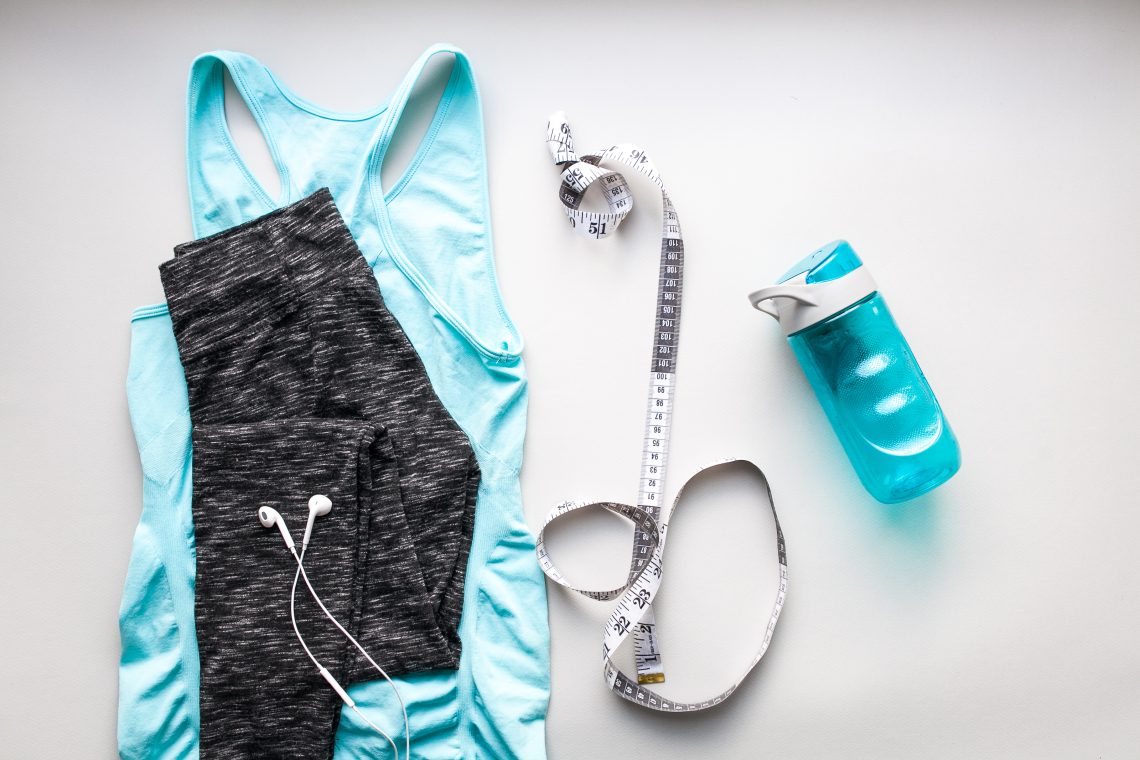




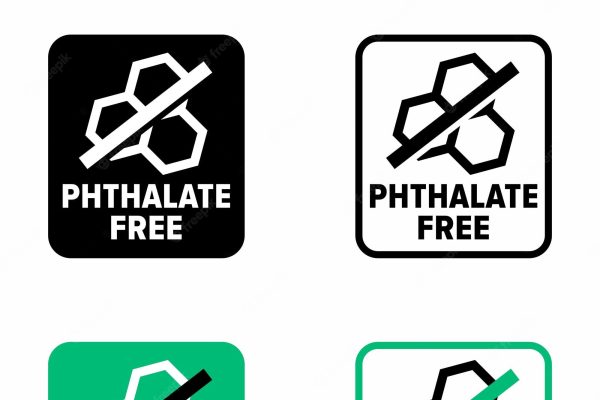





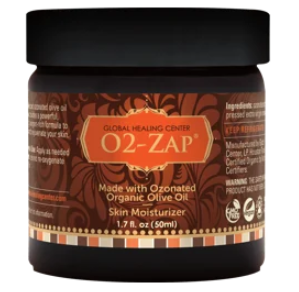
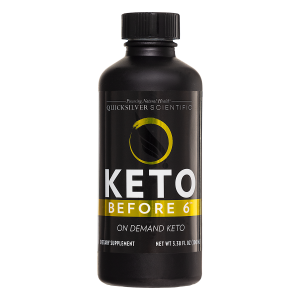
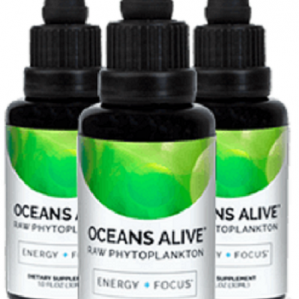












0 Comment